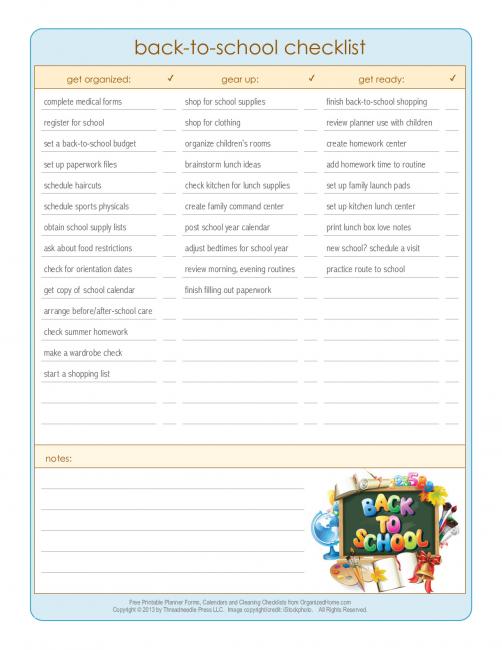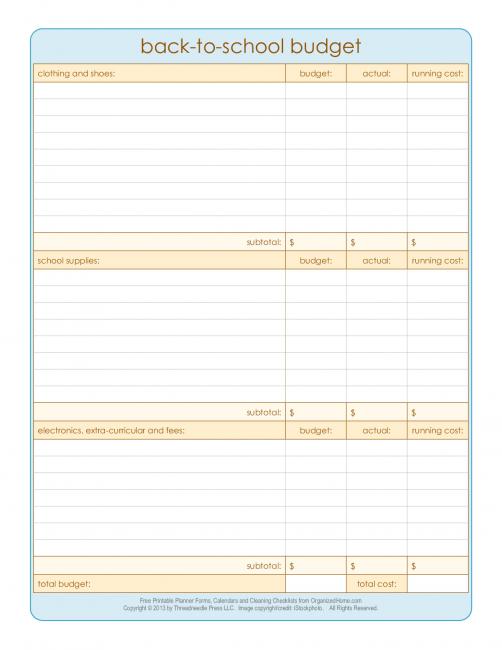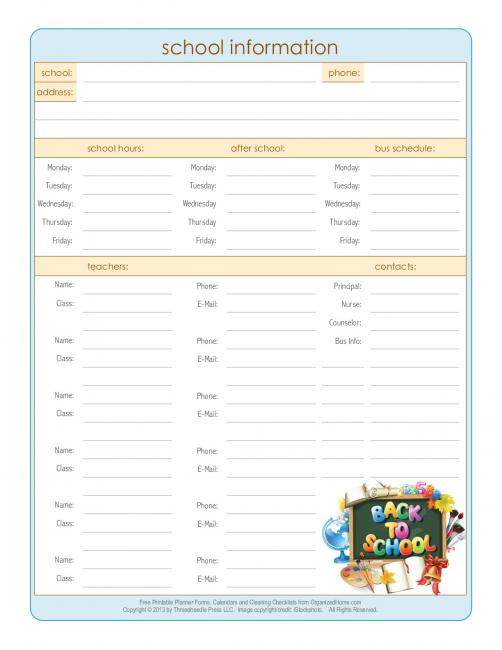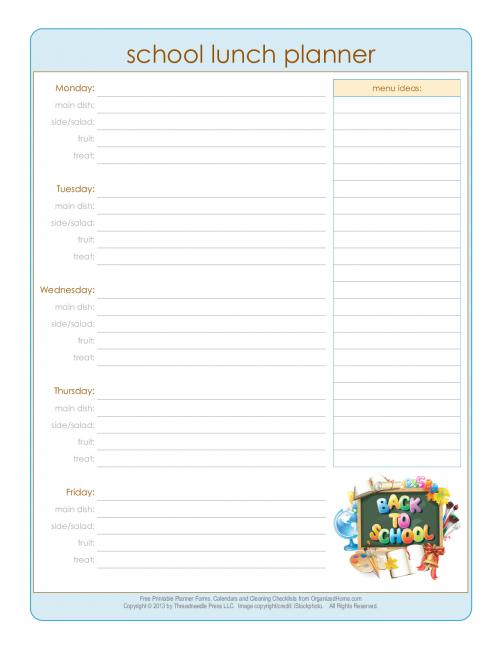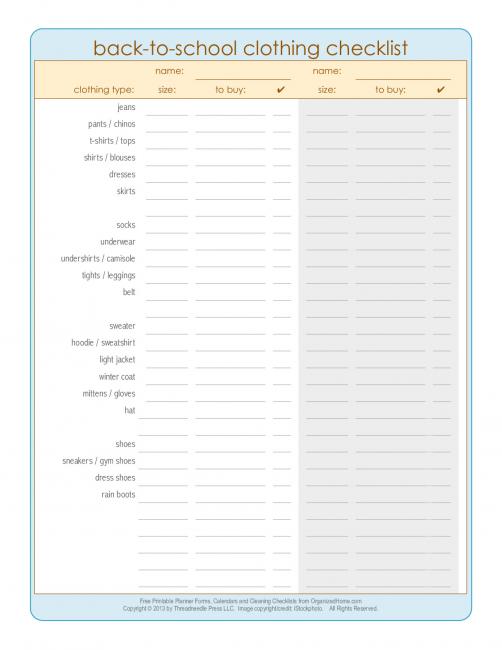Home's Cool! Get Organized for Home School

Homeschooling this year, ready or not? Whether you've chosen at-home education, or are adapting to school closures, use these tips for time, space and structure to get organized for home school.
Homeschool families, like Tolstoy's happy ones, are all alike: drowning in a sea of clutter!
Whatever the organization arena--time, space, money, computer access—-homeschool families have it worse. They have more stuff, less time, more distractions, less money, more chores and less space than just about anybody else.
How do you get organized for homeschool? Don't despair, homeschoolers! Here at OrganizedHome.Com, we've assembled the best tips, ideas, resources and links to get your new school year off to an organized start.
You don't homeschool? Hang around anyway! The principles used to organize full-time home schooling families also work for every other family where you find children and learning and love.
Ready? Get organized for homeschool, because home's cool!
Time Management for Homeschool Families
Time. It's a homeschool family's most precious resource--but the claims on a homeschooler's time are many and noisy!
School work, housework, sports and family activities crowd the calendar.
How do you get it all done each day?
Here are OrganizedHome.Com's best time management ideas for homeschool families:
Build a plan...with a planner
Homeschoolers, parent or child, need a beacon through the busy days. Whether you call them planners, activity calendars, schedules or daily assignment sheets, all homeschoolers need a guide for daily, weekly, monthly and yearly activities.
Brush up your planner power with these tips:
- Teach time management first. Nursery schools know that small children thrive on a routine. Homeschool runs more smoothly when everyone knows what's on the plan for the day. From a simple picture-based schedule for little ones, to a sophisticated student planner for high schoolers, bring your student up in the planner habit.
- Learn what you teach! Parents must set the course where time management is concerned. Do you use a planner properly? Brush up on basic planner skills here: Tap the Power of Planners, then visit our Printables Library for a wealth of free printable planner pages.
- Get a realistic grip on time. The biggest single time management mistake most people make is misjudging the time necessary to complete a task or finish an activity. Take a week to note the time your children need to complete spelling worksheets or finish a Saxon math assignment. Build success into your scheduling by being realistic with time estimates for homeschool activities.
- Pad the time budget for smooth transitions. Even with a realistic view of the time needed to complete each task in a homeschool day, you'll need to take a tip from structured schooling, and plan for between-class breaks. Whether play periods for young children, meals or scheduled recess, don't forget to account for the "time-between" each day's list of school tasks.
Skill with scheduling
Homeschool demands scheduling--but the devil is in the details. An organized parent of one or two children may succeed with a very flexible, very sketchy schedule, but the older the child or more numerous the students, the more important scheduling becomes.
Here are some ideas to help with homeschool scheduling:
- Start big--and work backward. To schedule a homeschool student, start with the year. List all courses, coursework, books and service activities necessary to complete the year. For each task, develop list of monthly goals: so many Saxon lessons, so many books, so many hours of service, so many worksheet pages. Break down each category by week, and review each week's goals with your student. From the weekly goal comes the daily school schedule. Working backward prevents both make-work and over-scheduling, because it focuses on the big goals, not separate time increments.
- Get feedback from the student. Time management bottlenecks can often be solved by the students themselves, if parents are willing to be flexible. So what if you feel math should be done first thing in the morning? Your sleepy-headed teen may do better when permitted to tackle math last thing in the day. Give your child a chance to solve scheduling problems. He or she may surprise you!
Home Management for Homeschool Families
Homeschool is school, but it's home, too--and housework will be with us always.
How do you manage to keep up with household chores while homeschooling your children?
Lower your standards.
Two-career families with household help may achieve that pristine designer look, but a homeschooling home is rumpled and comfortable. Accept the fact that a homeschooler's decorating scheme can be best described as "Early Science Experiment."
Forget the decorator frills and concentrate on the most important home management tasks: meals, clothes, keeping the health department at bay. You've got better things to do, like teach your children!
Plan, plan, plan! Homeschool families can get by with seat-of-the-pants home management only so long. Savvy homeschoolers set up simple home management routines for shopping, cooking, laundry, and cleaning.
Write them in your household notebook, or set up a simple tickler file for household tasks. Get it in writing, and you've taken the first step to getting it done.
Bring your children onboard.
Housework is a part of life, and should be part of your curriculum. Integrate math lessons with shopping and cooking. Examine the chemistry of surfactants as you do the laundry. Older children learn about child development as they entertain little ones while you school the kids in the middle.
Sending teens to do the shopping or setting them to pay the family bills teaches consumer education in a real-life setting. Harness those little hands to help out at home, and your future sons- and daughters-in-law will rise up and call you blessed.
Schedule the housework first.
Add rock-bottom necessary chores to the daily schedule or planner before planning each homeschool day. Meal preparation, child care and essential laundry chores can be delegated to children or planned for breaks between scheduled school activities. Schedule the chores first, and they'll get done without impeding the school day.
Look for new methods to save time. Learn to do home management chores the modern way. Many homeschoolers find bulk freezer cooking saves time each day. Read more about bulk freezer cooking with our Freezer Cooking Guide.
Modern speed cleaning methods involve team concepts ideal for home schooling families. Find out more about efficient cleaning with our Clean House Guide.
Stoke your own fires with a support group.
Being a home schooling parent is a hard, if rewarding, job. With all the demands of children and school and spouse and house, it's easy to burn out. Build time for rejuvenation and renewal into your own home management routines.
It sounds paradoxical, but it's true: the more you feed yourself, the more you have to give to others. Find a supportive friend or support group, and feed your soul!
Storage Strategies for Homeschool Households
Homeschooling families? It's time to get your stuff together! Seasoned homeschoolers know that "school stuff" has an amazing bread dough tendency.
Whether books and papers, manipulatives or models, it can be difficult to keep materials and supplies contained and in order for homeschool use. Try these storage strategies for homeschool families:
Stowing Kid Stuff:
A place for everything . . . but not where you think! Use "school" as a model for homeschool storage, and you're apt to reach for "bookcase" and "file cabinets." For homeschoolers, storage outside the box may be more efficient:
- Plastic dishpans are a homeschooler's best friend. Stand picture books on end in a dishpan for a flip-through library.
- A set of dishpans holds a younger child's school materials subject-by-subject: math manipulatives and workbook, language arts flashcards and materials, art supplies store neatly in their own dishpan. Put-away is a breeze!
- Plastic storage cubes and hanging file folders solve paperwork storage for an older child. Color-code hanging file folders by subject. Inside each folder, individual files hold work-in-progress, worksheets to be corrected, daily lessons.
- Bookcases can be frustrating storage tools for smaller children. Use magazine storage boxes, clear shoebox-sized organizers, dishpans or shallow cardboard boxes to store homeschool materials on bookcase shelves.
- Replace flimsy cardboard boxes with see-through plastic storage ontainers for easy-to-find storage of games, puzzles and toys.
- Game pieces, manipulatives and puzzle pieces live happily in large zipper food storage bags. Heavy freezer bags can be hole-punched and inserted into notebooks to hold art supplies, cut-outs, and desk materials.
Color-code it! Creative use of color simplifies homeschool storage.
- Color-coding simplifies life in multi-child families. Assign each child a color. Colored organizers, file folders, storage cubes and report colors sort Kid A from Kid B in bedroom, schoolroom and on the desk.
- Color-code subjects and activities. Use colored pens to add entries to a parent's planner or child's study organizer: red for math, green for English, blue for science. Colored file folders hold papers and worksheets subject by subject. Use assigned colors to highlight daily assignment sheets or schedules.
- Color-code labels. Using a computer, it's easy to add color-coding to computer-generated labels. Slap them on everything, from storage boxes to file folders to maps to art supplies.
On the desk:
Homeschooling parents know paperwork is a big part of the job. From record-keeping to selecting curricula and materials, homeschool parents must sift and shuffle papers, catalogs, and documents.
Try these ideas for efficient paper-handling in your home school:
- Use lightweight, sturdy records boxes to hold homeschool materials. Hanging file folders fit these boxes nicely. The boxes stack neatly and are easy to handle. Sort by child, curricula, subject or year. Labeling is easy with permanent markers.
- Stackable letter trays serve many functions on the desk. Use them to sort papers to correct, correspondence, or lesson plans.
- Color-code, color-code, color-code. Use color in hanging file folders, file folders, pens and labels. Whether it's child by child, subject by subject or unit by unit, color does the job!
- Tab position is another tool to organize homeschool records. Bought a box of third-cut file folders? Don't just use them 1-2-3, 1-2-3. Instead, use all "first cut" folders for Child 1, "second cut" for Child 2, "third cut" for Child 3. Tab position can help you sort by child, by subject, by topic.

